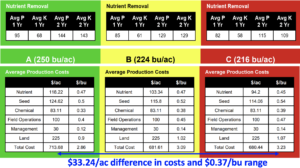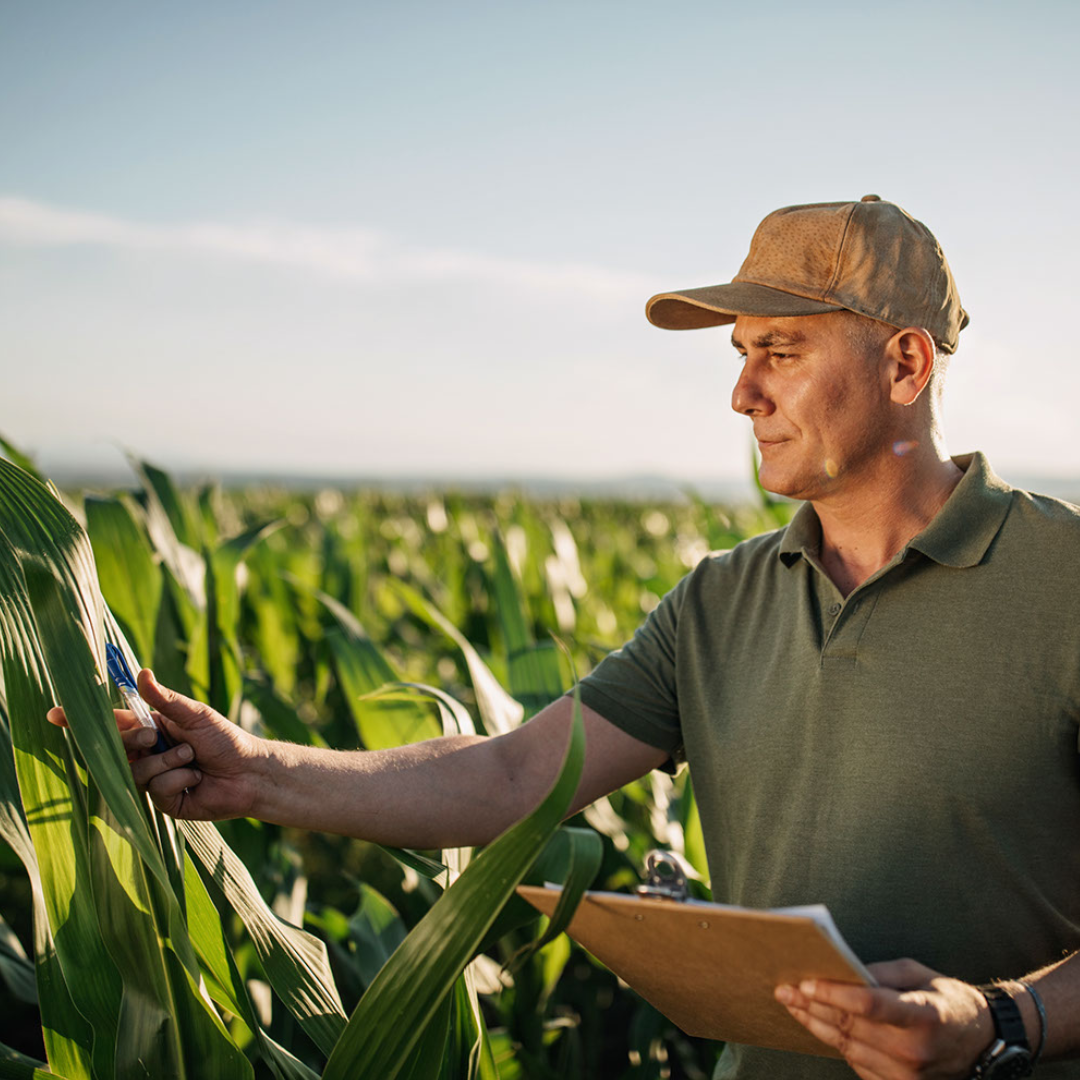Today we are talking about farm analytics and how avoiding data can leave money on the table for your operation. We are joined by Katie McWhirter, Manager of Training and Development at Premier Crop Systems.
If you are enjoying the show, tweet us using #PremierPodcast.
RENEE HANSEN: Welcome to the Premier Podcast, Katie. Thanks for joining us today. We were talking about how Premier Crop can really impact growers’ decisions through our analytics. Why don’t you just tell us a little story, how you were talking to somebody about how they didn’t realize how much analytics that we did?
KATIE MCWHIRTER: Yeah, I was meeting with a grower who asked the question about: ‘Is the direction of Premier Crop going from being a prescription company to an analytics company?’ And I had to laugh, and I said: ‘Premier Crop has always been about analytics.’ And not only being a company known for their analytics, but then what to do with the information that is received in the data, in those analytics.
RENEE HANSEN: So you’re going to walk us through a report and how you talk about the analytics reports that we give growers. So can you just give us an example? You have a management zone report pulled up for us that we’re looking at, but it also isn’t only about agronomics. It’s also about economics. Can you walk us through how you would talk through these analytics, this specific report of management zones and the different pricing for our audience?
KATIE MCWHIRTER: Yeah, so it’s funny as we’re sitting here. I was talking about this report this morning and how we have a suite of reports. And Renee, you’re awesome at marketing because you put on there what all these are: program offerings and the suite of reports. And I’ve had different people say: ‘What are these? Suite of reports?’ And I’m like: ‘Well, I could kill you with paperwork.’ But, really, it’s about the reports and the insights that I can take to be able to help them make better decisions.
The one report that I have up here is a management zone report with all the cost information in it. So, if I scroll to the bottom, it’s almost like a report card for the grower. So what we can see is the cost per acre in their different management zones. And we’re talking management zones. It’s not just about seeding rates. It’s about marrying up the nutrients that go along with increasing seeds. So, at the bottom of this report, we can see that we’ve invested more dollars per acre for nutrients and for seeds. Our chemical costs, our operations costs, management and land are going to be flat rates, or they’re equal across each of these zones. But when we get down to the bottom of this report, we can see that we’ve invested $30, $40, $47 more in our A zone, our best parts of the field, than in our C zone. $47 an acre is a lot more per acre. But when we look at that break-even cost per bushel, we notice that our break-even cost per bushel, or the amount it’s taking us to produce a bushel of corn, is about 90 cents less where we’ve spent more.

And so that’s amazing, to actually pull out and say, ‘No, variable-rate does pay,’ and to show that grower and prove to them that it does pay. I was telling this story this morning because I sent this report — it happens to be my dad’s — to my brother. And he goes: ‘But what do you do with it?’ And that’s the important part. We can produce reports and pretty graphs, but I’ve always laughed. What professional business person takes a pretty report, looks at it, goes, ‘Wow, that’s really neat,’ and sticks it in a three-ring white notebook in their office? So that’s where the advisor comes in, taking that data and saying: ‘What can I do with it?’ So the top of this report shows what the soil test attributes happened to be. But, then, right below it is the applied nutrients in each of these zones. So, very quickly, as an advisor, I can look and see: what was my average nitrogen that I put on in these zones? Or my average phosphate? Actual phosphate? Or actual K2O? And very quickly, I can see what’s been removed off and what I’ve put on in these areas.
As we’re going into the fall with these fertilizer inputs — and, actually, all inputs — being what they are, even though prices are good, people are going to be concerned. Growers are going to be concerned when they start to hear what these prices are. Can we take this information to make a better recommendation or a better prescription for next year’s crop? I’ve been telling people, for the last month, my worry is that when farmers get shown these prices, they could make some emotional decisions. And in fact, those emotional decisions of cutting across every acre could be cutting profitability in the areas where they could be returning the most.
RENEE HANSEN: Yeah, we were just talking about this on a call, how there’s a high risk, high reward right now, just because commodity prices are high, but also fertilizer rates are really high. Input rates are high. And Dan made a comment, how if you’re a gambling man or woman, you were sitting at the $10 table. You were sitting at the $10 table, playing blackjack, whatever. And now, you just moved to the $50 table, where the risk is high. The reward is high. So these decisions that you’re talking about, you’re looking at removal rates. And I think that’s something different, that a lot of companies don’t go to the depth of looking at an actual removal rate. This is coming from the yield monitor, and it’s telling you how much was removed of that specific nutrient and calculating that. So go deeper into that because I know that’s where you were looking at: some of these removal rates.
KATIE MCWHIRTER: Well, I just think, as I say, we have to figure out what we actually have control over. There’s so much in the data world that there are certain things we don’t have control over. So let’s look at the things that we can help growers with. I’m not saying to starve out any area, but reallocate. What does the grower’s pocket book look like for a given field? I chuckle when growers tell me that their yield goals are the same across every field. Or if we treat every field the same, you can’t tell me that yield goals or, on the flip side, removals, as you’re talking about, are the same on every field. And we’re talking about removals spatially, with that yield file. That’s a huge variance. I mean, growers know. When they’re in a combine, and they’re watching that monitor, they see those high areas of the field. Well, those high areas of the field are removing a lot more nutrients than when that monitor hits those, we’ll say, the red areas on the map in their combine. I mean, there’s a big difference. So that means if there’s a big difference in yield, there’s a big difference in removals.
So, yeah, using that removal file as part of their nutrient plan or recommendation is going to be really, really big this coming year, in addition to establishing: what is the goal for that field moving forward for this following year? Is it setting spatial yield goals? Is it setting spatial fertility goals? What kind of a goal are we going to have based on input prices, with the potential for these input prices being what they are? I sent an email to one of my growers last week, and I said: ‘We really need to talk in the next 10 days. If prices are going to remain as they are, what are you thinking for fall fertilizer?’ Because we’re going to need to put some on, what does it look like if prices stay this way? Then, how do we pivot as we move into harvest season and that sort of thing in order to prevent those emotional decisions? And growers with a plan don’t make emotional decisions. They’re a lot more confident and a lot calmer in fall and harvest time.
RENEE HANSEN: Yeah, and you have all these reports that come out year over year because it’s not just a ‘one year, set it and forget it.’ There are so many factors that go into this and all of the farm analytics that you’re looking at because every year is different, of course, depending on weather too. I mean, so you’re layering that as a factor on top also.
KATIE MCWHIRTER: Right. Exactly. It’s not just one piece of information. We focused a lot here in our conversation on fertility. But, we were talking ‘seeding rates’ this morning and making sure that’s the right rate on the field. I mean, that’s just so important, to be able to use that information. And we’ve always said that we knew variable-rate seeding paid, and now we can prove it. And those are real dollars. That’s a lot of money on the table and at stake. Like you said, you’re at the $50 table. And I told somebody a couple weeks ago, I said: ‘We really should, like agriculture, call 1-800-BETSOFF.’
RENEE HANSEN: It is a total gambling game, isn’t it? I mean, they always say that. Let’s do some quick math, though, on this report, Katie. So, in the A zone you’re showing that there, it was 200.2 bushels per acre. The C zone is 150.9 bushels per acre. And if you scroll down to the bottom of this report that we’re looking at, it shows us what you had said: the break-even cost per bushel, what it costs to raise that bushel of corn.
KATIE MCWHIRTER: If we want to do the math on this report, Renee, if it’s 200 bushels in the A zone, I’m just going to use $4.50 for corn. That would bring us to $900 for revenue per acre. And if we take out, as this report shows, I’m just going to round up at $718 per acre. That’s going to be $181 profit in that A zone versus our C zone yielding 150 at $4.50 corn. That’s $675. We’ll round up the cost per acre in the C zone just to $670. It’s $5. So it’s breaking even in the C zone. I mean that, then — and I know math’s not your strong suit — but, I mean, that’s $176. $175. $176 per acre.
RENEE HANSEN: Per acre in your A zone. And the things that you changed, and it shows what you variable-rated on. It looks like it was your nutrient, your seed and some chemicals.
KATIE MCWHIRTER: Yeah, so there were some spatial chemical costs in there. Yep.
RENEE HANSEN: So variable-rate clearly pays. So what if you were to flat-rate this whole field? What would this look like? I mean, you would clearly be losing your money in the C zone, more than if you’re over-applying your nutrients.
KATIE MCWHIRTER: I once had an advisor tell me, he’s like: ‘Think about, in your C zones, if you’re even at break-even or losing money, and you could bring those areas up — not lose as much money just in those C zones — what that could equate over 1000, 2000, 5000 acres in an operation.’ Those are real dollars, Renee.
RENEE HANSEN: Those are real dollars. That’s the economics of it. There’s so much agronomics that you guys go into when you start breaking it out into some of your fertilizer costs, as well. But we’ll get into that another time. Maybe we can talk about an ELB report on the next one. Hopefully, we didn’t confuse everybody too much with the math here. But there’s a clear reason that these reports show that the profitability of variable-rate pays. Using something like Premier Crop, looking at the farm analytics, is highly beneficial.
KATIE MCWHIRTER: If you just use yield, you really don’t know how much money there is out there.
RENEE HANSEN: Thanks for joining us today, Katie.
KATIE MCWHIRTER: You’re welcome, Renee.
RENEE HANSEN: Thanks for listening to the Premier Podcast, where everything agronomic is economic. Please subscribe, rate and review this podcast so we can continue to provide the best precision ag and analytic results for you. And to learn more about Premier Crop, visit our blog at premiercrop.com.
___________________________________________________________________________________________
- For more helpful tips and insight on all things data and agriculture, visit our blog at http://info.premiercrop.com/blog
- Curious about precision ag? Download our 5 Steps to Getting Started Guide: http://info.premiercrop.com/5-steps-guide
- Ready to cut through the bull? Download our No Bull Guide to Precision Ag: http://info.premiercrop.com/field-profitability-guide
- Podcast provided by Premier Crop Systems. Learn more about us at https://www.premiercrop.com


